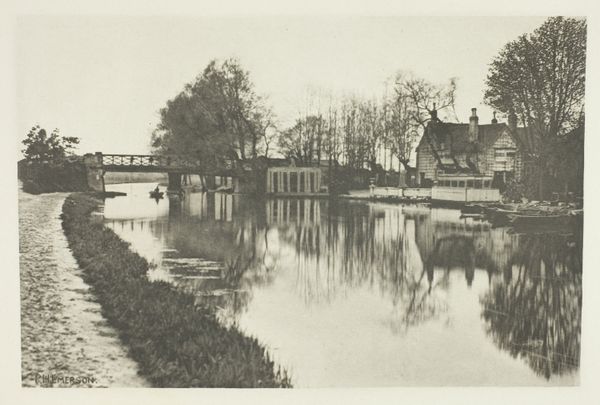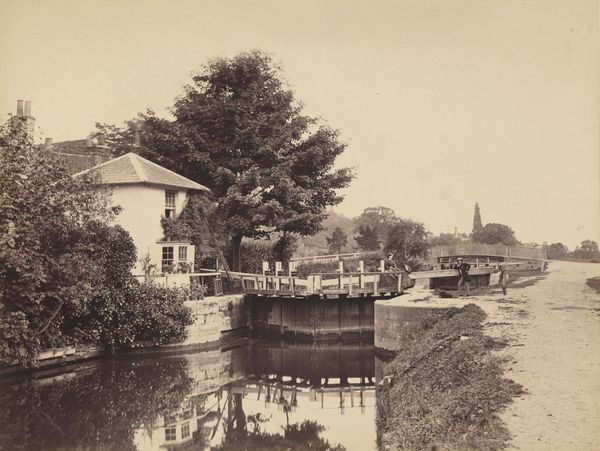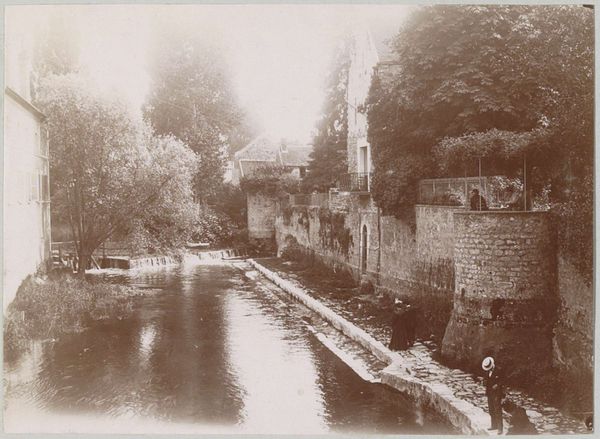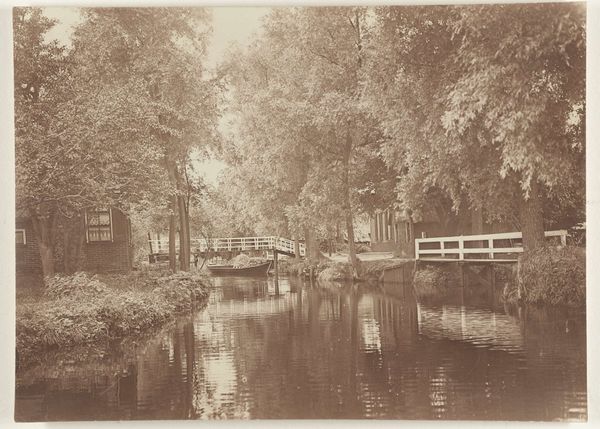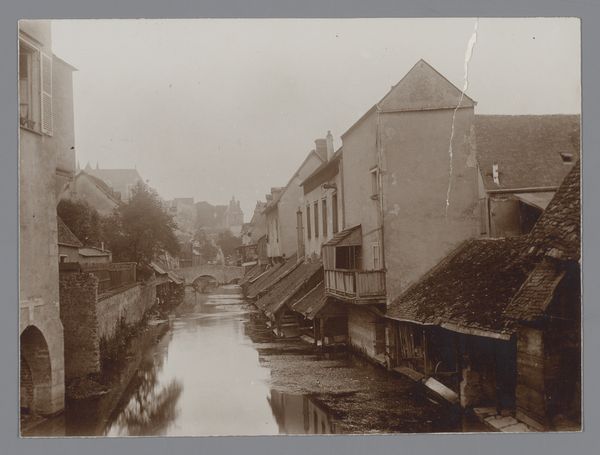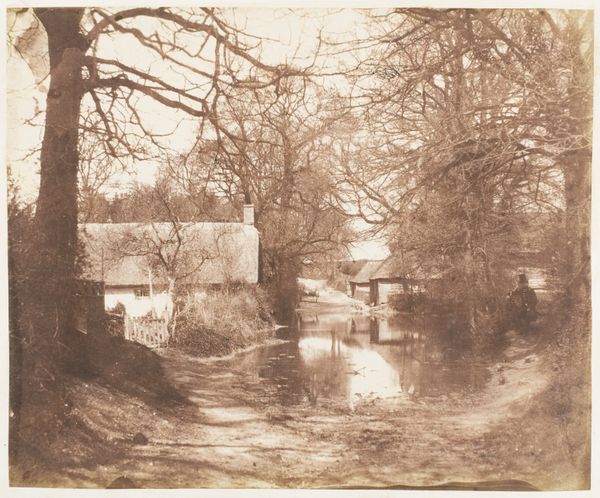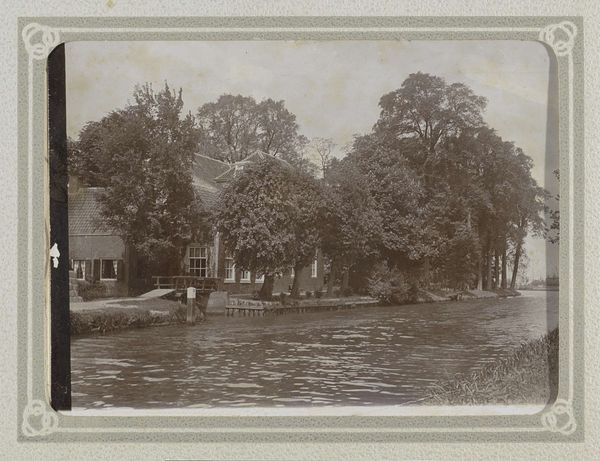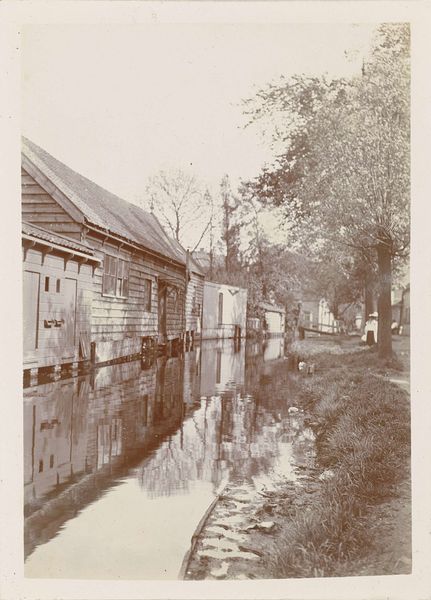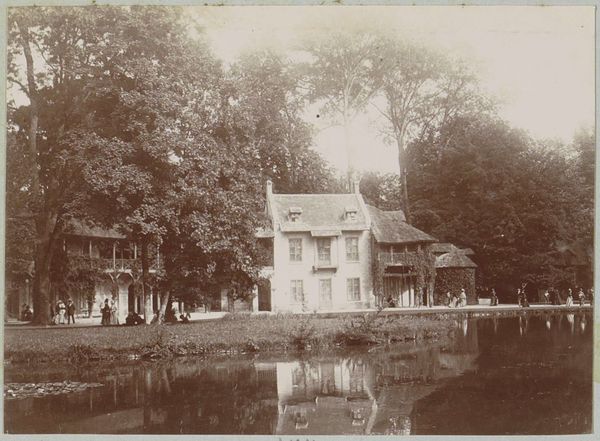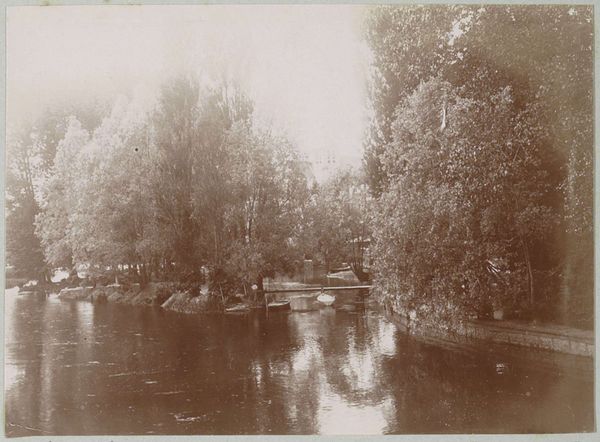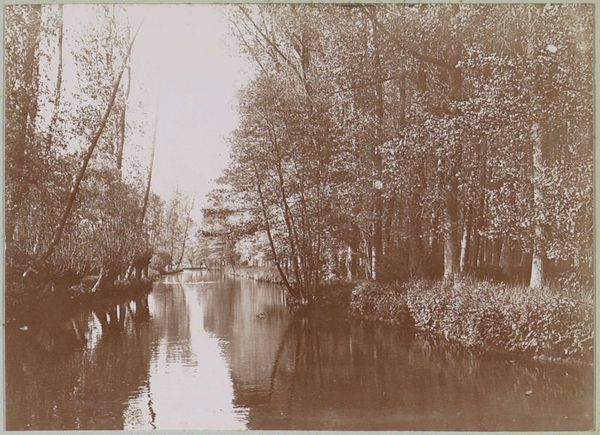
Dimensions: height 80 mm, width 106 mm
Copyright: Rijks Museum: Open Domain
Curator: Here we have "Huizen aan een water in Pacy-sur-Eure", captured by Delizy in 1896. It resides here at the Rijksmuseum. Editor: There's such a tranquil, dreamlike quality to this photograph, isn't there? The tones are so soft and muted; the houses are half-veiled by mist. It’s all very atmospheric, creating a sense of stillness and calm. Curator: Indeed. Note how Delizy orchestrates the composition, with the flowing water leading the eye toward the buildings, all framed meticulously with verdant foliage. The architecture presents an interplay between human structure and nature’s embrace, rendered through tonal variations and gentle gradations. Editor: And it appears to be an example of the "plein-air" photography movement of the period? It makes me wonder about Delizy himself: his method, his materials. What camera did he use? What were the precise chemical processes he employed to coax these sepia tones onto paper? It emphasizes photography’s own claim as an art form – a crafted object not merely mimicking the world but shaping it. Curator: Quite. The artistry transcends the mechanical; it breathes intention into every tone, shadow, and reflection. Notice too the reflections mirrored in the river and what that might say about Delizy’s exploration of the natural and the ephemeral. Editor: Absolutely! Because behind that seemingly serene façade of the landscape, the act of image-making also comes into play—the photographer selecting the vantage point, adjusting the exposure, controlling the means of its presentation. Did the working classes inhabit these places or were they workers traveling elsewhere from other provinces to these grand looking residencies? Curator: It is tempting to delve into broader social and economic analyses given the period it was created in. However, if we allow ourselves, the eye beholds an orchestrated balance, an assertion of beauty found within a constructed arrangement of light and shadow. It has a timeless quality. Editor: Precisely, perhaps these scenes remain mostly as they once did even until today. Still a vital record from that period. It just makes you think about the craft. Curator: I appreciate now, the depth Delizy brought to a serene location, even if in a relatively simple landscape study. Editor: Indeed, considering all the potential production demands that could be at stake. It has certainly offered a fascinating context and perspective.
Comments
No comments
Be the first to comment and join the conversation on the ultimate creative platform.
